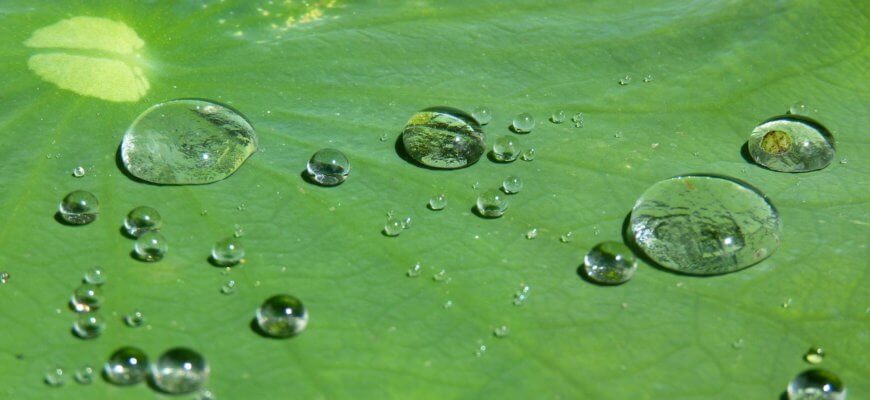Sustainability …
…a catchy word these days! In times of population growth, climate change and environmental challenges, one should think and act in a sustainable way…right? This can mean reducing meat consumption, avoiding plastic bags or cycling instead of using the car: living a sustainable life can look differently on everyone. But still, one thing is for sure: the reduction of negative consequences for future generations and most importantly the protection of the environment are central aspects of sustainability.
And what does Sustainability have to do with Biomimetics?
We slightly touched the topic of sustainability in several of our articles (Go with the flow, Give and take, Interview with Prof. Speck), but let’s try to get a little bit more specific at this point. Is there a general answer to the question: Are biomimetic inventions sustainable? Or: asking the question of Arnim von Gleich, tackled in his article from 2007: Is Biomimetics as good as its reputation [1]?
In my opinion, it can be – but does not necessarily have to. The fact of ‚being Biomimetic‘ alone is not enough. Or does the fact of being inspired by nature and following a functional principle, optimised by evolution, mean, that something is sustainable? Arnim von Gleich concluded the obvious: there is no general answer to that question, we have to decide for every case individually [1].
I am quite interested in your thoughts about this. I think this is a very challenging and important topic to think about when you are a researcher in Biomimetics. And what people think and perceive about hot topics like Sustainability or Biomimetics is actually one of the most important aspects in this discussion.
The power of people’s perception
Our society often (mis-)uses the term ‚bio‘ to make a product seem more ecologically friendly, fair-trade or healthy. People feel better buying an organic product – they get a positive feeling for themselves and for their surroundings. Now let’s look at Biomimetics. What do people think when they are confronted with a biomimetic product (maybe having the choice between a ’normal‘ and a ‚biomimetic‘ product). Maybe they would feel more innovative, technologically up-to-date or modern. But what about their ecological consciousness? Does the costumer associate Sustainability with Biomimetics? Unfortunately, we do not (yet) have an answer to that question. But what we have is a concrete example to test the hypothesis, if biomimetic products are more sustainable than a ’non-biomimetic‘ alternative. This also brings me back to the topic of our theme session: surfaces!
Beyond the surface: let’s have a look at a specific example!

Water-repellent leaf surface
When it comes to ‚Biomimetics‘ and ‚Surfaces‘ there is really only one example which has to be mentioned right away: the famous ‚Lotus effect‘, first described by Wilhelm Barthlott and Christoph Neinhuis in 1997 [2]. It describes a self-cleaning effect observable on various leaf surfaces, based on properties like surface roughness, reduced particle adhesion and water repellency [2]. The Lotus effect has been successfully transferred into a technical product: the self-cleaning wall paint Lotusan®. Researches carefully assessed this biomimetic product to understand, if it is not only biomimetic but also more sustainable than conventional wall paints.
‘The greener the cleaner’ – a highly up-to-date publication by Anthony et al. (2016) [3] – is a ‚must read‘ for everyone involved in discussions about Biomimetics and Sustainability and especially for everyone assuming, an answer to this question is easy to get. In this study, the biomimetic paint Lotusan® is compared to an alternative paint from the same company. It takes into account not only ‚hard facts‘ like the chemical composition or a ‚life cycle analysis‘, but also emphasizes the importance of the costumer’s behaviour. The researchers could actually prove that Lotusan® is a more sustainable product than the comparative paint, but: only due to the fact that it has a longer service life (meaning you have to repaint your house less often). Intuitively this is for sure a valid argument for being sustainable. But: what if we as costumers are not aware of that and repaint our house anyway at an earlier time step (maybe because we perceive it as necessary or simply feel like it)? Can we then still pretend to have chosen a sustainable product?
So what do you think?
As you might have noticed, I am leaving the field of Biomimetics a little bit here. This discussion is not only valid for Biomimetics but issues of sustainability in general. The way single costumers behave does make a bit difference and determines the real value of a product!
As hinted above, I would like to encourage you to share your thoughts about Biomimetics and Sustainability (via facebook, linkedin or comments) – do you know a biomimetic product which you perceive (or do not perceive) as sustainable… and why?
References
[1] Arnim von Gleich (2007) Ist die Bionik so gut wie ihr Ruf? Das bionische Versprechen. Ökologisches Wirtschaften 22(3): 21-23.[2] Wilhelm Barthlott and Christoph Neinhuis (1997) Purity of the sacred lotus, or escape from contamination in biological surfaces. Planta 202(1):1-8.
[3] Florian Anthony, Rainer Grießhammer, Thomas Speck and Olga Speck (2016) The cleaner, the greener? Product sustainability assessment of the biomimetic façade paint Lotusan® in comparison to the conventional façade paint Jumbosil®. Beilstein Journal of Nanotechnology 7, 2100-2115, doi: 10.3762/bjnano.7.200



